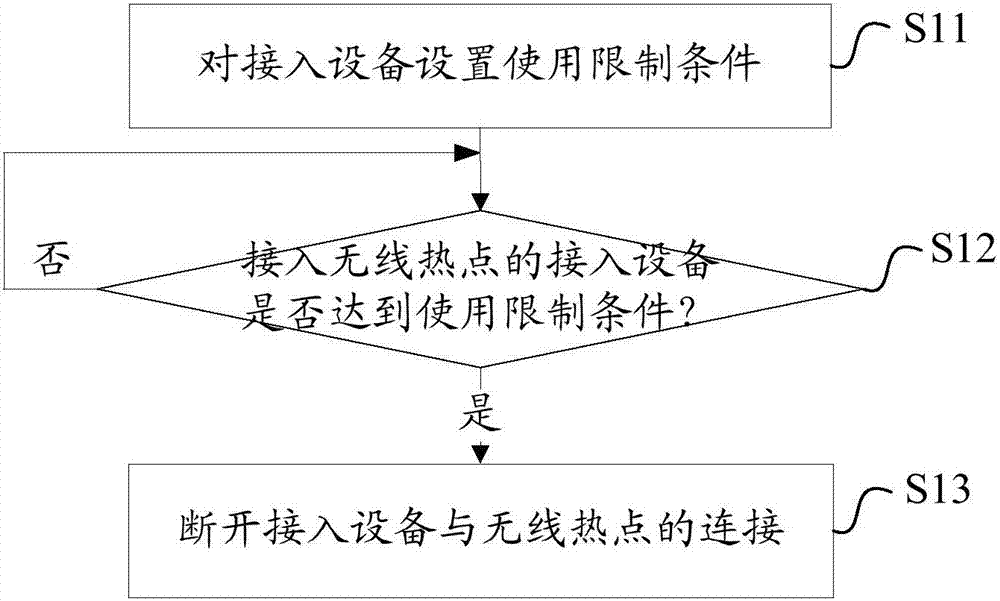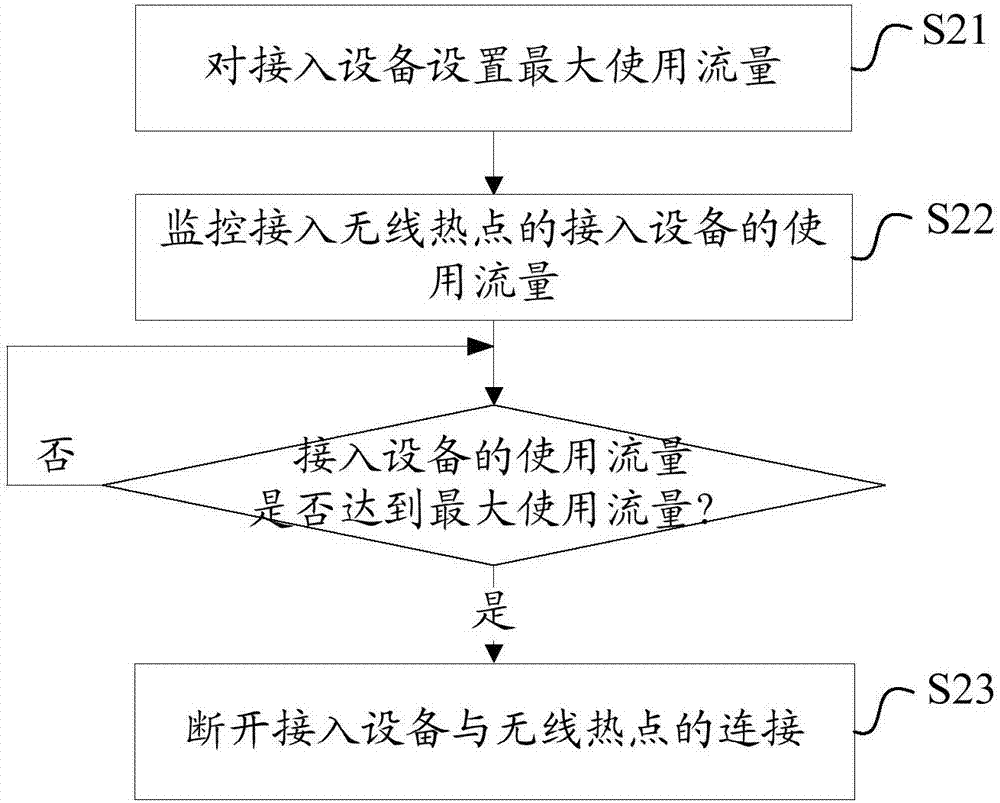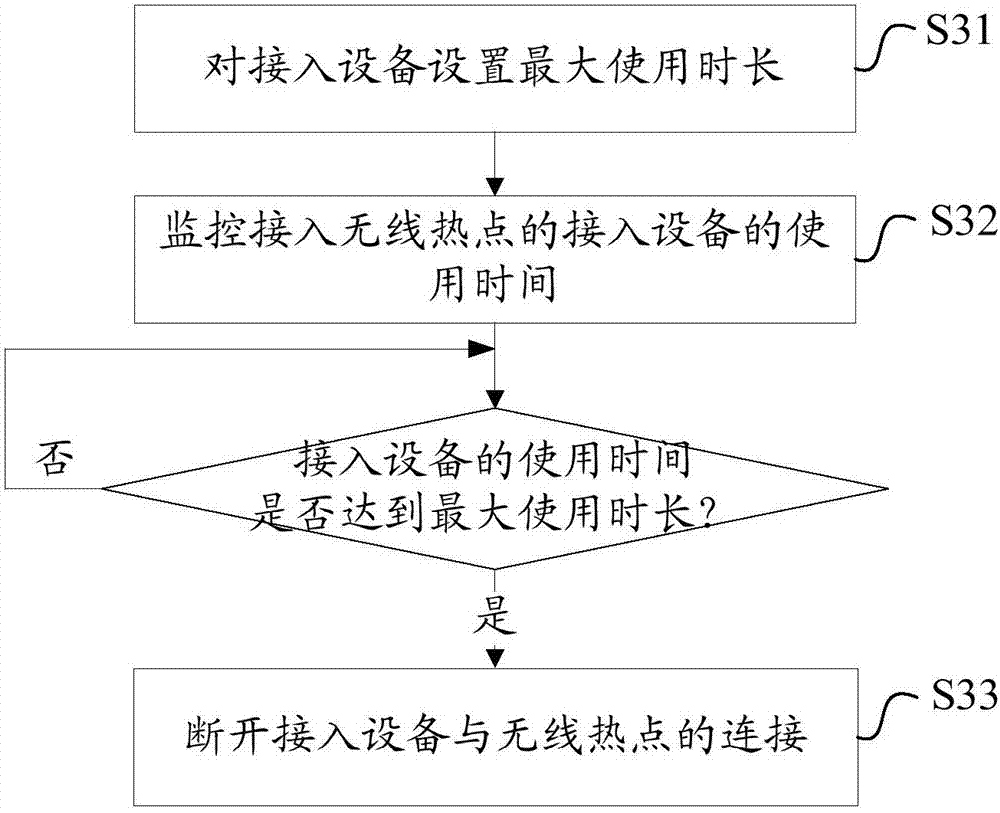Network sharing method and device based on wireless hotspot
A wireless hotspot and network technology, applied in the field of communications, can solve the problems that the network cannot be used reasonably and effectively, the normal use of other users is affected, and the controllability of network sharing is poor. control effect
- Summary
- Abstract
- Description
- Claims
- Application Information
AI Technical Summary
Problems solved by technology
Method used
Image
Examples
no. 1 example
[0031] see figure 1 , propose the first embodiment of the network sharing method based on the wireless hotspot of the present invention, the method includes the following steps:
[0032] S11. Set usage restriction conditions on the access device.
[0033] The access device can be a mobile terminal such as a mobile phone or a tablet, or a fixed terminal such as a personal computer. Use restriction conditions can be set for each access device separately, or use restriction conditions can be set for each access device uniformly.
[0034] Specifically, after the wireless hotspot is turned on, when the access device is connected to the wireless hotspot or after the access device is connected to the wireless hotspot, use restriction conditions can be set for each access device respectively. At this time, the use restriction conditions of each access device may be the same or different. Or, before turning on the wireless hotspot, uniformly set usage restrictions on the access devic...
PUM
 Login to View More
Login to View More Abstract
Description
Claims
Application Information
 Login to View More
Login to View More - R&D
- Intellectual Property
- Life Sciences
- Materials
- Tech Scout
- Unparalleled Data Quality
- Higher Quality Content
- 60% Fewer Hallucinations
Browse by: Latest US Patents, China's latest patents, Technical Efficacy Thesaurus, Application Domain, Technology Topic, Popular Technical Reports.
© 2025 PatSnap. All rights reserved.Legal|Privacy policy|Modern Slavery Act Transparency Statement|Sitemap|About US| Contact US: help@patsnap.com



